Ventotene is part of the Pontine Islands Archipelago, located almost in the centre of the Tyrrhenian Sea and reachable from Anzio, Formia and Terracina. It is a small island (1.54 km²) and, like Ponza, was born from the deposit of andesites, basalts and tuffs coming from effusions and explosions of underwater volcanoes.
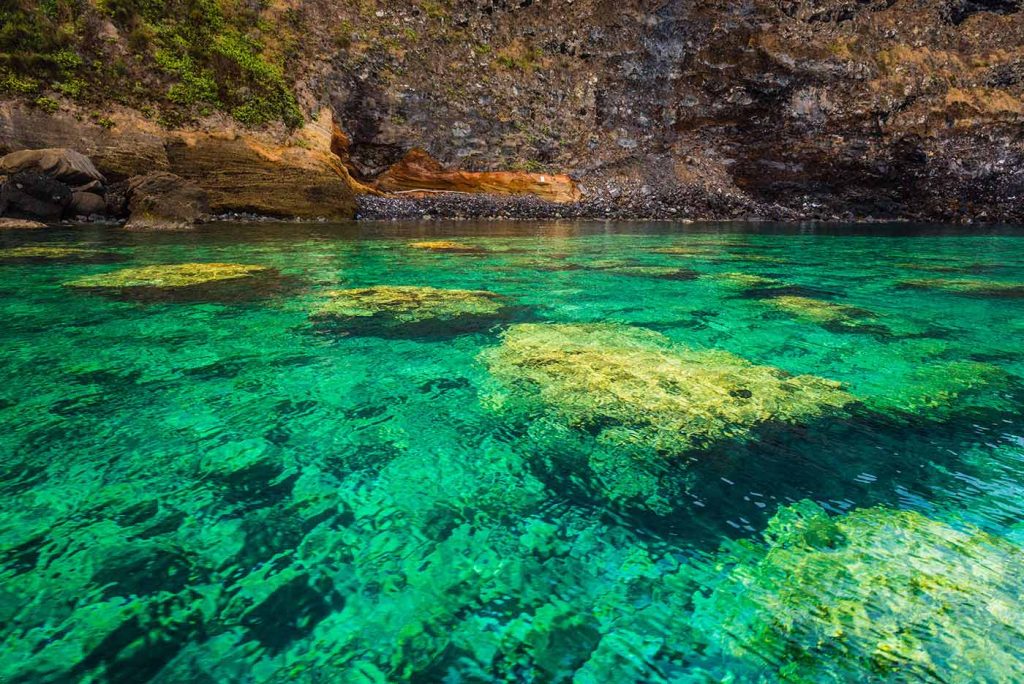
Let you immerse yourself in these clear waters for a few moments and be enchanted by the: scarlet sponges covering the walls of the caves, gorgonians, purple and blue limestone formations that appear like tropical coral, clusters of mollusc eggs and damselfish. Furthermore, it is still possible to observe archaeological finds from the ships sunk in Roman times, the most significant are now kept in the Municipal Archaeological Museum.
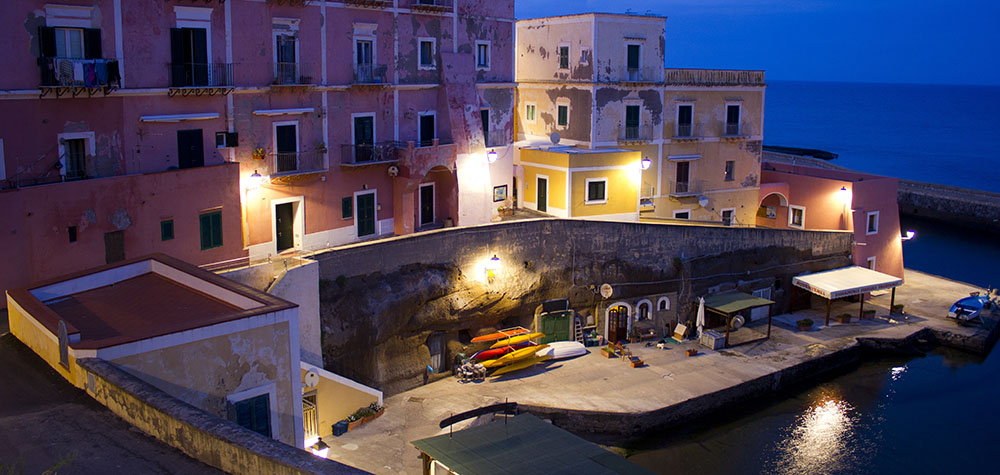
Ventotene at night
The island has two beaches: Cala Rossano in the basin of the new port and Cala Nave, in front of two large rocky shapes (Nave di Terra and Nave di Fuori) and the so-called Scoglietello, of great scenic impact. Other seaside resorts, although less easy to access, are found in Cala Battaglia and Parata della Postina to the south, Parata Grande and Moggio di Terra to the north-west, and Capo dell’Arco to the west.
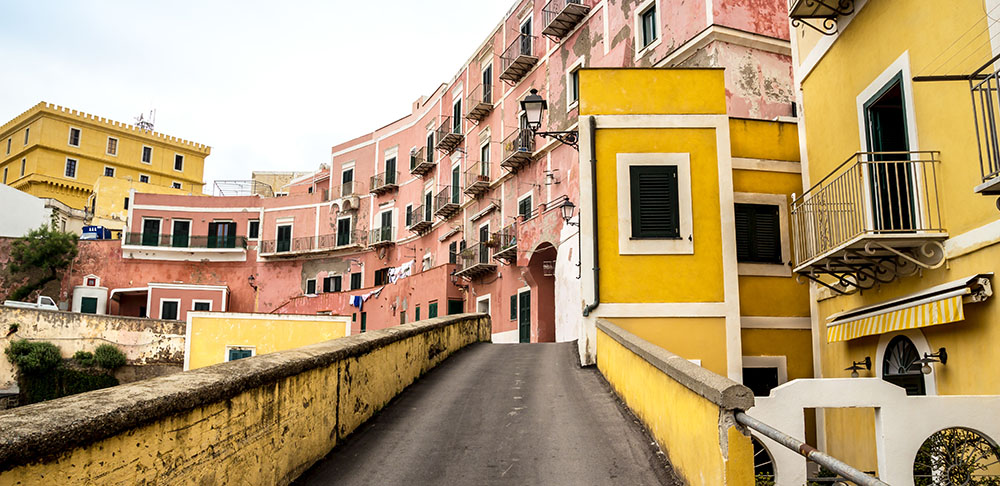
Modern Ventotene was built in the 18th century by Antonio Winspeare and Francesco Carpi and preserves the urban nucleus around Piazza del Comune or Piazza Castello, the Church of Santa Candida and Piazza De Gasperi, with the only two streets that run along the entire island.
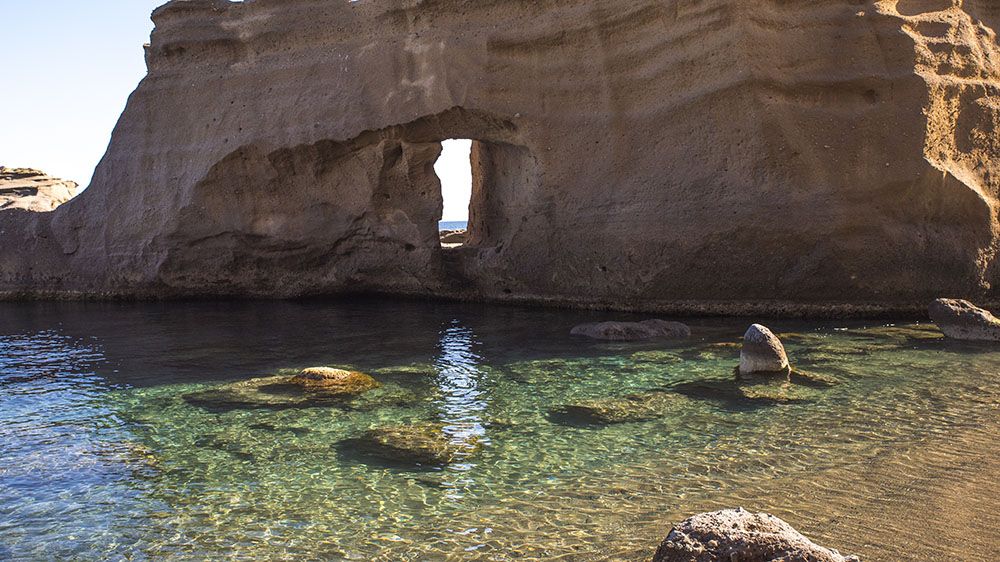
Crystal clear sea in Ventotene
From an archaeological point of view, in addition to the Roman Port (1st century BC – 1st century AD), the following attractions are worth to be mentioned: the Pozzillo (probably the old Roman towpath), the Roman Peschiera, the remains of Villa Giulia, presumably built in the 1st century AD, which occupied the entire northern slope up to Punta Eolo, the stretches of walls in the Polveriera area and the remains of a small necropolis in Cala Battaglia. The first document considered among the founding texts of European unity was born in Ventotene, today known as “The Ventotene Manifesto“, written between 1941 and 1942 by Altiero Spinelli, Ernesto Rossi and Eugenio Colorni during their political confinement. Because of its significant role in the history and culture of Europe, the island of Ventotene obtained the prestigious European Heritage Label in 2022.
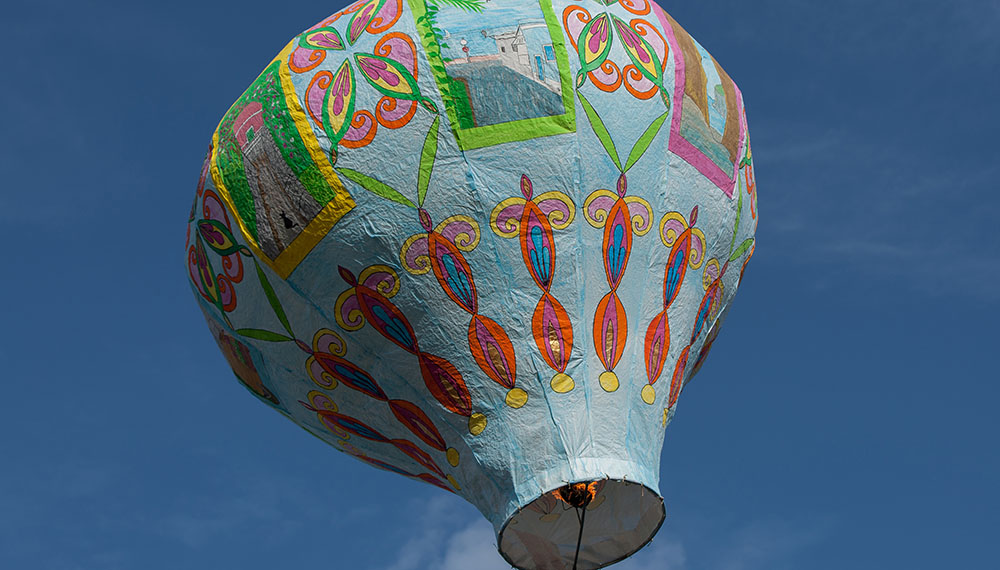
popular festival on the island of Ventotene, with typical paper hot air balloons
An event not to be missed is the Feast of the Patron Santa Candida, on September 20, with a Hot Air Balloon Competition, organised by the citizens and students of the island, which is traditionally held the day before the Feast.

Santo Stefano Island View from Cala Nave in Ventotene
The “Riserva Naturale Statale Isole di Ventotene e Santo Stefano” is a Marine Protected Area which includes two Islands. Santo Stefano, dominated by the former Bourbon Prison from 1795, and Ventotene, from which it administratively belongs.
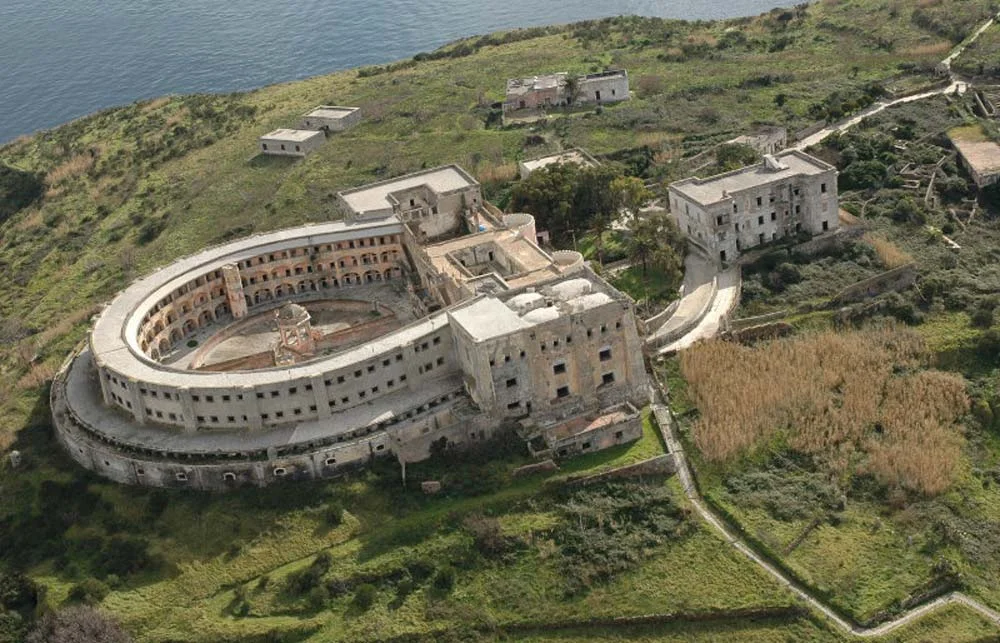
Photo of the former Bourbon Prison on the Island of Santo Stefano
The Prison, in use until 1965, can only be visited on guided tours. The islet, reachable by boat, hosts the landing places of Marinella, the only sheltered one, and, westwards, “The Burrone” or “Morrone”, “Punta dei Sospiri”, and “Vasca Giulia”. According to legend, Octavian’s daughter used to bathe here during her exile.

Photo of lentils
The lentils from Ventotene, already known in Roman times, have been included in 2002 among the PAT (Prodotti Agroalimentari Tradizionali del Lazio) products. The main local dish is a creamy lentil soup with mussels, fragrantly dusted with chives, parsley, thyme and pepper. At Christmas time, lentils are served with sliced cotechino, a large, tender, pork sausage. This speciality has been declared product of excellence due to the skilled local farmers, who traditionally carry out the traditional winnowing of pig feed grain.
In the island of Ventotene there is one of the 10 Green Flags in Lazio, the award for the most welcoming child friendly beaches.
